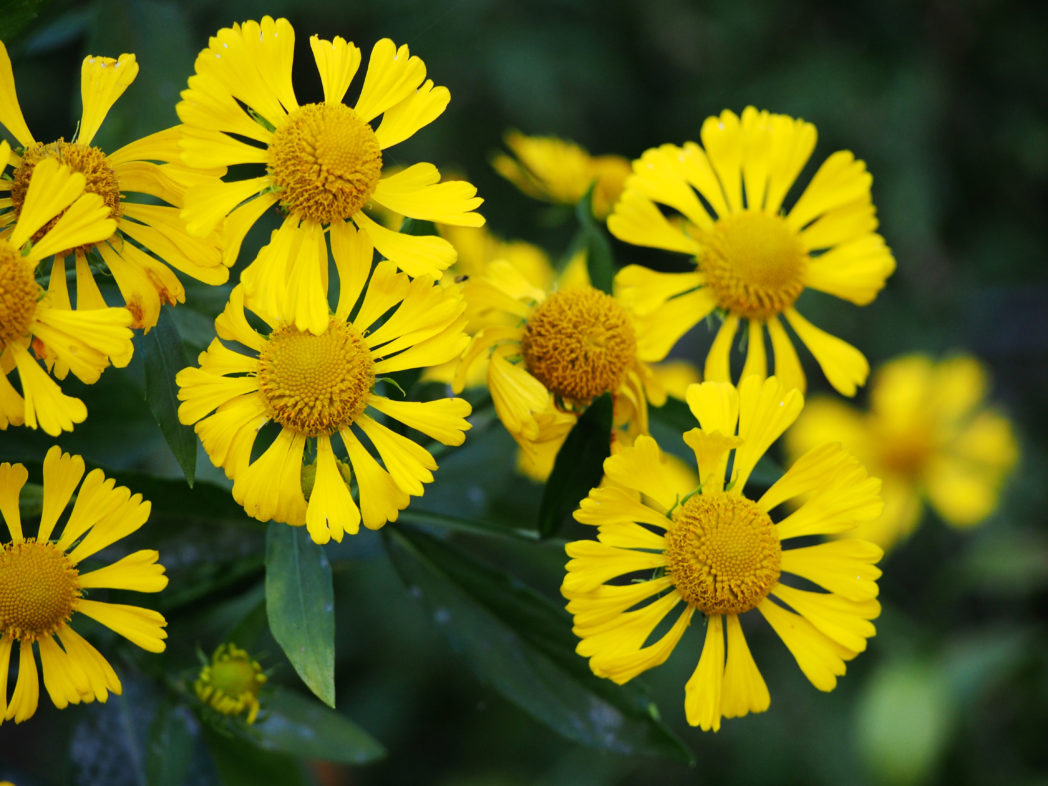Common sneezeweed
Pictured above: Common sneezeweed (Helenium autumnale) by Agnieszka Kwiecień (CC-BY 3.0).Click on terms for botanical definitions. View post as a PDF.
Common sneezeweed (Helenium autumnale) is an herbaceous perennial with cheerful yellow flowers. It typically blooms spring through fall, attracting moths, butterflies, bees and other pollinating insects. It occurs naturally in floodplain forests, wet flatwoods, bluffs, mesic hammocks, bogs, savannas and swamps.
Flowers are comprised of 8–20 ray florets, each with three lobes or notches, whirled around a dense, button-like cluster of up to 800 disk florets. One plant may produce as many as 100 blooms. Stems are erect, branched and glabrous. Leaves are lanceolate to elliptic with toothed or entire margins. Leaf bases extend to the stem, forming wings. Seeds are borne in achenes.
While smelling sneezeweed may not cause a biological reaction, the common name references the historic use of certain species of Helenium by Native Americans. Leaves were dried, ground into a powder and inhaled as snuff, which would induce a sneeze that was thought to rid the body of evil spirits.
The genus Helenium is named for Helen of Troy, the daughter of the Greek god, Zeus. The legend states that these flowers sprouted from the ground where her tears fell. The species epithet autumnale refers to the plant’s tendency to bloom in autumn.
Common sneezeweed’s flowers, leaves and seeds are poisonous to humans if ingested in large quantities.
Family: Asteraceae (Aster, composite or daisy family)
Native range: Eastern and central Panhandle, Orange and Lake counties
To see where natural populations of Common sneezeweed have been vouchered, visit florida.plantatlas.usf.edu.
Hardiness: Zones 8A–9B
Lifespan: Perennial
Soil: Moist to wet sandy, loamy or mucky soils
Exposure: Full sun
Growth habit: 2–4’+ tall
Propagation: Seed, division
Garden tips: Common sneezeweed makes a nice addition to a moist wildflower or butterfly garden. Plants may become tall and require staking; they can be cut back to encourage a shorter, bushier growth habit.
Common sneezeweed plants are occasionally available from nurseries that specialize in Florida native plants. Visit www.plantrealflorida.org to find a nursery in your area.
For more information on other Helenium species, see:
Southeastern sneezeweed (Helenium pinnatifidum)

